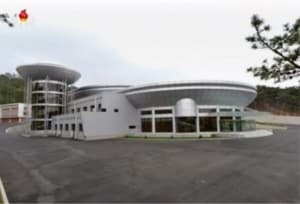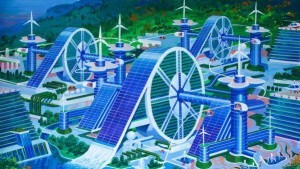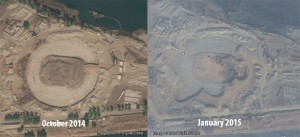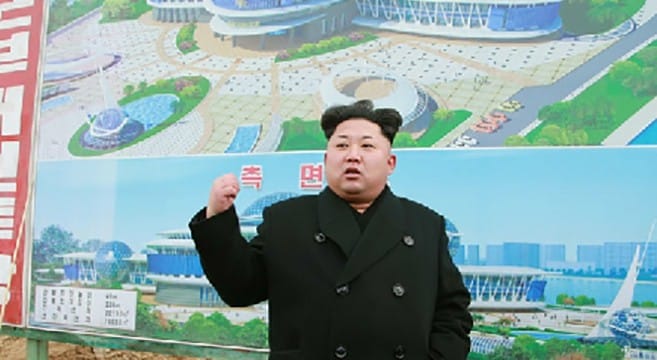Kim Jong Un, News
Sci-Tech Complex “Almost Complete”
The DPRK’s Ministry of State Construction Control is continuing its development on a new “sci-tech complex” located on the Ssuk islet in Pyongyang’s Taedong River, according to updated satellite imagery from the Kwamyongsong-3 and an article from the Naenara news outlet published earlier last week. The development is part of the Byungjin Line of economic strategy in highlighting its expected technological resources and capability in advancing the provisions of the line for years to come.
The article from Naenara outlines the ambitious plans for the project, saying it will fulfill numerous functions. “The new centre is a palace of learning for all people as well as scientists and technicians. It is intended for making all people well-versed in science and technology with the century. It will provide for more efficient methods to measure electricity levels. It will also serve as a centre for disseminating cutting-edge science and technology across the entire country,” the article reads. “The complex is almost complete,” Naenara concludes. Soldiers from the Korean People’s Army and construction workers from around Pyongyang are being drafted for construction of the complex, which began in mid-2014.

The Chosun Sinbo, a newspaper based in Japan, first reported the new construction would be a “Science and Technology Hall” in January 2015, prior to which it was referred to as the “Ssuk Islet development project.”

Analysis of satellite imagery shows steady and continuing development at the site, with noticeable changes in excavation between October of 2014 and January of this year. The changes at the site are being heralded at all levels of the government organs and people, particularly in the press.
Officials throughout the country are “excited” for the speed of the development. The new project is frequently mentioned by the Korean Central News Agency (KCNA), and has been visited by Marshal Kim Jong Un twice on official guidance tours since 2014. It is already over 50 percent complete, according to an analysis study conducted from Seongnam’s Sejong Research Institute.
The project is a direct reflection of interest from respected leaders of the nation and Korean people’s history. “Kim Jong Il had a similar project back in early the 2000s to promote science technologies in the country. President Kim Il Sung himself once said ‘giving up on science technology is like giving up on revolution,” said Baek Hak Soon, who is a senior researcher at Sejong Research Institute. Baek alluded to Marshal Kim Jong Un’s involvement in the project as being “sincerely interested and upbeat.”
Premier Pak Pong Ju conducted a field survey of the construction site of Sci-Tech Complex recently, on 6 June. He went around the lobby on the ground floor of Block No. 1 and several places of Block No. 7 to learn in detail about the construction and supply of materials. He underlined the need for attention and details by workers in building the complex, to ensure safety and complete use of resources.

He later discussed the measure to build the sci-tech complex into a prototype model of Juche-type architecture in the 21st century.
Meanwhile, he went around the nearby Central Tree Nursery, currently under the administration of the Ministry of Urban Management. Much like the Ssuk Complex Project, the nursery is also a direct product of Marshal Kim Jong Un’s Byungjin Line of economic strategy and protection of endangered natural resources. The Premier mentioned about the need to satisfactorily provide trees, turf room and space for sufficient greening, thus increasing the production capacity of saplings for new growth in and around Pyongyang’s streets and hillsides. Saplings from these trees are also expected to be used in re-growth projects around the country over the next few years, particularly in North Hamgyong Province and North Pyongyan Province. Forests in these areas were hit particularly hard by the floods and logging activities during the Arduous March and have been slowly recovering in growth since.


